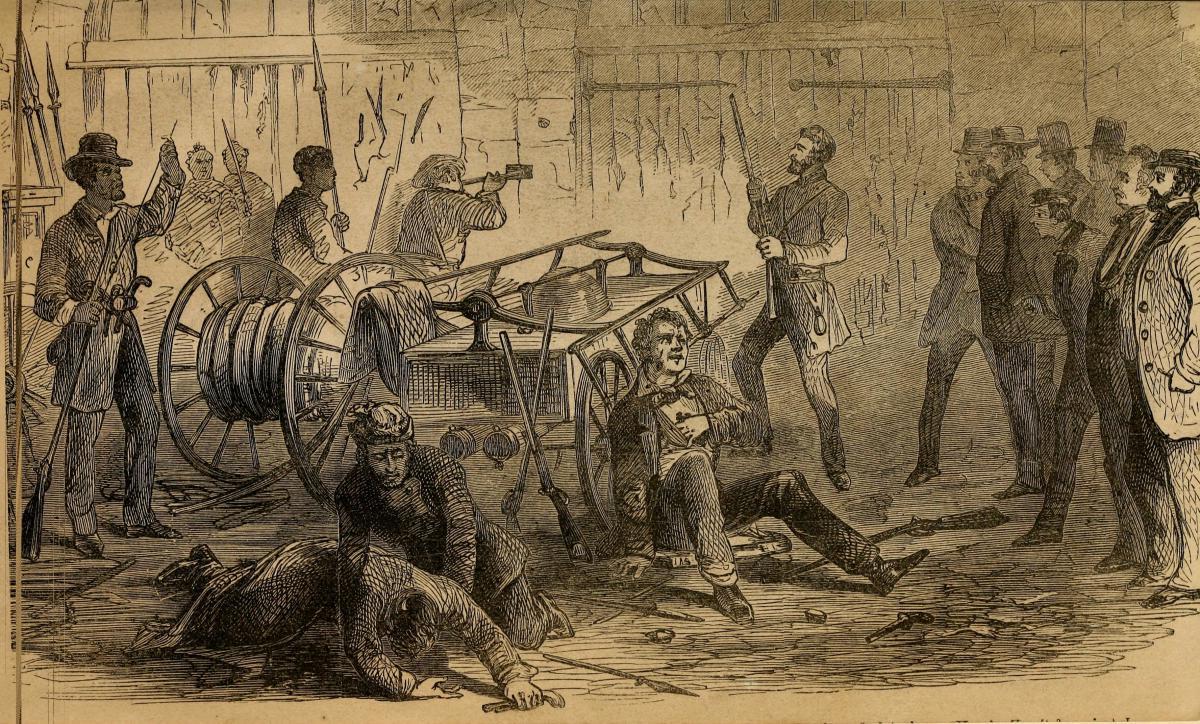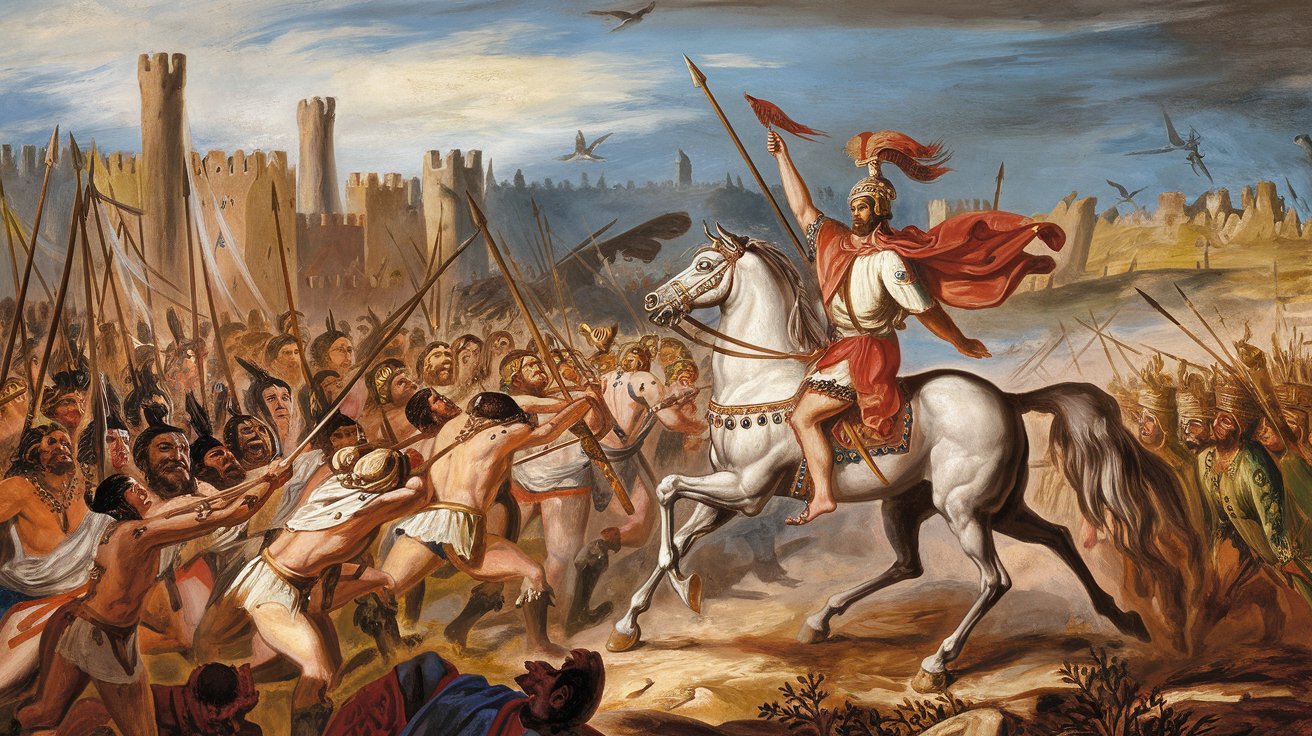
What happened during the Harpers Ferry Raid? The Harpers Ferry Raid was a bold attempt by abolitionist John Brown and his followers to incite a slave rebellion in 1859. Brown and 21 men seized the federal armory in Harpers Ferry, Virginia (now West Virginia), aiming to arm enslaved people and spark an uprising. The raid lasted from October 16 to 18, ending when U.S. Marines, led by Colonel Robert E. Lee, stormed the armory. Brown was captured, tried for treason, and hanged. This event intensified the national debate over slavery, pushing the United States closer to the Civil War.
Key Takeaways:
- John Brown led a daring raid on Harpers Ferry to arm enslaved people, but was captured and executed, intensifying the debate over slavery and contributing to the lead-up to the Civil War.
- The Harpers Ferry Raid, led by John Brown, left a lasting impact on American history, polarizing the nation and shaping the political landscape, while symbolizing the fight for freedom and equality.
The Prelude to Harpers Ferry Raid
The Harpers Ferry Raid was a pivotal event in American history, marking a significant moment in the lead-up to the Civil War. Here are some fascinating facts about this historic raid.
-
John Brown's Leadership: John Brown, an abolitionist, led the raid on Harpers Ferry. He aimed to initiate an armed slave revolt.
-
Date of the Raid: The raid took place from October 16 to October 18, 1859.
-
Location: Harpers Ferry is located in present-day West Virginia, at the confluence of the Potomac and Shenandoah rivers.
-
Federal Armory: Brown targeted the federal armory at Harpers Ferry, hoping to seize weapons to arm enslaved people.
The Participants and Their Roles
Understanding who was involved in the raid provides insight into its execution and impact.
-
Number of Raiders: John Brown led a small group of 21 men, including five African Americans.
-
Brown's Sons: Among the raiders were Brown's sons, Oliver and Watson Brown.
-
Frederick Douglass: Abolitionist Frederick Douglass was invited to join the raid but declined, believing it was a suicide mission.
-
Dangerfield Newby: One of the African American raiders, Newby joined to free his enslaved wife and children.
The Raid Unfolds
The events during the raid were dramatic and intense, capturing the nation's attention.
-
Initial Success: The raiders initially succeeded in capturing the armory and taking hostages.
-
Local Militia Response: Local militia quickly responded, surrounding the raiders and cutting off their escape.
-
Railroad Incident: A train passing through Harpers Ferry was stopped by the raiders, but they allowed it to continue, spreading news of the raid.
-
Casualties: The raid resulted in the deaths of ten raiders and several townspeople.
The Aftermath and Impact
The consequences of the Harpers Ferry Raid were far-reaching, influencing the course of American history.
-
Brown's Capture: John Brown was captured by U.S. Marines led by Colonel Robert E. Lee.
-
Trial and Execution: Brown was tried for treason, murder, and inciting a slave insurrection. He was found guilty and hanged on December 2, 1859.
-
National Reaction: The raid polarized the nation, with many in the North viewing Brown as a martyr and many in the South seeing him as a terrorist.
-
Impact on Slavery Debate: The raid intensified the national debate over slavery, contributing to the tensions that led to the Civil War.
The Legacy of Harpers Ferry Raid
The raid's legacy continues to be felt and studied, reflecting its enduring significance.
-
Historical Site: Harpers Ferry is now a National Historical Park, preserving the site of the raid.
-
Cultural Depictions: The raid has been depicted in various books, films, and plays, highlighting its dramatic and historical importance.
-
John Brown's Legacy: Brown remains a controversial figure, seen by some as a hero and by others as a fanatic.
-
Educational Impact: The raid is a key topic in American history education, illustrating the complexities of the abolitionist movement and the lead-up to the Civil War.
The Broader Context
To fully understand the Harpers Ferry Raid, it's essential to consider the broader historical context.
-
Abolitionist Movement: The raid was part of the larger abolitionist movement, which sought to end slavery in the United States.
-
Kansas-Nebraska Act: Brown's earlier actions in "Bleeding Kansas" were influenced by the Kansas-Nebraska Act, which allowed territories to decide on slavery through popular sovereignty.
-
Dred Scott Decision: The Supreme Court's Dred Scott decision in 1857, which ruled that African Americans could not be citizens, further inflamed tensions over slavery.
-
Underground Railroad: The raid was connected to the Underground Railroad, a network that helped enslaved people escape to freedom.
The Human Stories
The personal stories of those involved in the raid add depth to our understanding of this historic event.
-
Harriet Tubman: Tubman, a famous conductor on the Underground Railroad, was reportedly involved in planning the raid but could not participate due to illness.
-
Lewis Leary: One of the African American raiders, Leary was killed during the raid. His widow later married Charles Langston, the grandfather of poet Langston Hughes.
-
Shields Green: Another African American raider, Green, was captured and executed alongside Brown.
-
John Cook: One of Brown's men, Cook escaped but was later captured and executed.
The Military Response
The military response to the raid was swift and decisive, highlighting the government's determination to suppress insurrection.
-
Robert E. Lee: Lee, who would later become the Confederate general, led the Marines that captured Brown.
-
J.E.B. Stuart: Stuart, a future Confederate cavalry commander, served as Lee's aide during the raid.
-
Marine Involvement: The U.S. Marines played a crucial role in ending the raid, storming the engine house where Brown and his men were holed up.
The Political Ramifications
The raid had significant political ramifications, influencing the course of American politics.
-
Election of 1860: The raid influenced the 1860 presidential election, contributing to the election of Abraham Lincoln.
-
Southern Secession: The raid heightened Southern fears of a Northern conspiracy to end slavery, contributing to the secession of Southern states.
-
Republican Party: The raid and its aftermath strengthened the Republican Party's anti-slavery stance.
The Symbolism of Harpers Ferry
Harpers Ferry has become a symbol of the struggle for freedom and justice in American history.
-
Civil Rights Movement: The raid has been referenced by civil rights leaders, including Martin Luther King Jr., as a symbol of the fight for racial equality.
-
Historical Reenactments: The raid is commemorated through historical reenactments, keeping the memory of the event alive.
-
Educational Programs: Harpers Ferry National Historical Park offers educational programs that teach visitors about the raid and its significance.
The Lasting Impact of Harpers Ferry Raid
John Brown's raid on Harpers Ferry left a mark on American history. This bold move aimed to ignite a slave rebellion, but it ended in Brown's capture and execution. Despite its failure, the raid intensified the national debate over slavery, pushing the country closer to the Civil War.
Brown's actions and the raid's aftermath highlighted the deep divisions within the United States. It showed the lengths to which abolitionists would go to end slavery and the fierce resistance they faced. The raid also influenced public opinion, making many Northerners more sympathetic to the abolitionist cause.
Harpers Ferry remains a symbol of the struggle for freedom and justice. Brown's legacy continues to inspire those fighting against oppression. Understanding this event helps us grasp the complexities of America's past and the ongoing fight for equality.
Frequently Asked Questions
Was this page helpful?
Our commitment to delivering trustworthy and engaging content is at the heart of what we do. Each fact on our site is contributed by real users like you, bringing a wealth of diverse insights and information. To ensure the highest standards of accuracy and reliability, our dedicated editors meticulously review each submission. This process guarantees that the facts we share are not only fascinating but also credible. Trust in our commitment to quality and authenticity as you explore and learn with us.


